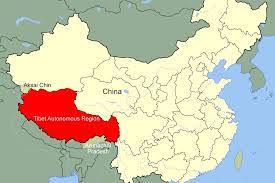China – Tibet Issue:

U.S. Special Coordinator on Tibet Uzra Zeya met with the ‘Sikyong’ or leader of the self-styled Central Tibetan Administration Penpa Tsering and other officials and representatives of the Tibetan community on a public visit to Dharamshala (Himachal Pradesh).
- The visit is being seen as a strong message from the Indian government to China as well, which protests what it calls “meddling” in Tibet, as the visit was facilitated by New Delhi.
- Tibet is a region on the Tibetan Plateau in Asia, spanning about 2.4 million km2 – nearly a quarter of China’s territory.
- It is the traditional homeland of the Tibetan people as well as some other ethnic groups.
- The People’s Republic of China asserts that Tibet has been a part of China since the Mongol-led Yuan dynasty.
- In 1951 Tibetan leaders were forced to sign a treaty dictated by China.
- The treaty, known as the “Seventeen Point Agreement”, professes to guarantee Tibetan autonomy and to respect the Buddhist religion but also allows the establishment of Chinese civil and military headquarters at Lhasa (Tibet’s capital).
- However, the Tibetan people – including Dalai Lama – consider it invalid and as having been signed under duress.
- This has often been described by the Tibetan people as a cultural genocide.




